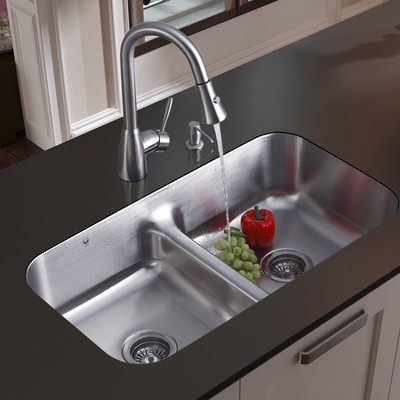
Источник: https://www.pinterest.com.au
Мойки из нержавеющей стали для кухни завоевали популярность среди домовладельцев, потому что оf их способность выдерживать износ, привлекательный внешний вид, и легкий уход. Эти мойки не только выполняют свою функцию, но и могут улучшить общий вид вашей кухни.. Однако, на рынке представлено огромное разнообразие моек из нержавеющей стали., выбрать правильный вариант может оказаться непростой задачей. Целью этого руководства является предоставление вам исчерпывающей информации о кухонных мойках из нержавеющей стали., включая их преимущества, типы, размеры, и обслуживание. Делаете ли вы ремонт на кухне или нуждаетесь в новой мойке, это руководство предоставит вам знания, необходимые для принятия обоснованного решения.
Плюсы и минусы мойки из нержавеющей стали

Источник: https://my.lwv.org
Мойки из нержавеющей стали являются популярным выбором для многих домовладельцев из-за их долговечности., простота обслуживания, и привлекательный внешний вид. Однако, как и любой другой материал, есть плюсы и минусы использования Продукты из нержавеющей стали.
Плюсы
- Долговечность: Мойки из нержавеющей стали долговечны и выдерживают большой износ.. Они устойчивы к царапинам, вмятины, и сколы, что делает их отличным выбором для кухонь с интенсивным движением людей..
- Легко чистить: Мойки из нержавеющей стали легко чистить и обслуживать.. Они не требуют каких-либо специальных чистящих средств и их можно мыть водой с мылом..
- Коррозионностойкий: Нержавеющая сталь устойчива к коррозии, это означает, что он не ржавеет и не покрывается пятнами со временем.
- ЧАСустойчивый к еде: Мойки из нержавеющей стали выдерживают высокие температуры, не деформируясь и не плавясь., что делает их отличным выбором для кухонь, где часто используются горячие сковороды и кастрюли..
- Универсальный: Мойки из нержавеющей стали доступны в различных размерах., формы, и стили, что позволяет легко найти тот, который соответствует дизайну и функциональным потребностям вашей кухни..
Минусы
- Может быть шумно: Раковины из нержавеющей стали могут издавать шум, когда вода попадает на поверхность., что может быть неприятно для некоторых людей.
- Показывает пятна воды и отпечатки пальцев.: На раковинах из нержавеющей стали могут оставаться пятна от воды и отпечатки пальцев., из-за чего они могут выглядеть грязными, даже если они чистые.
- Можно поцарапать: Хотя мойки из нержавеющей стали долговечны, их можно поцарапать абразивными материалами, которые со временем могут потускнеть поверхность.
- Может вмятину: Хотя мойки из нержавеющей стали, как правило, устойчивы к вмятинам., они все еще могут быть помяты тяжелыми предметами или резкими ударами..
- Может потребоваться защитное покрытие: Некоторым мойкам из нержавеющей стали может потребоваться защитное покрытие для предотвращения повреждений и коррозии с течением времени., что может увеличить стоимость мойки.
Толщина(Измерять) и качество
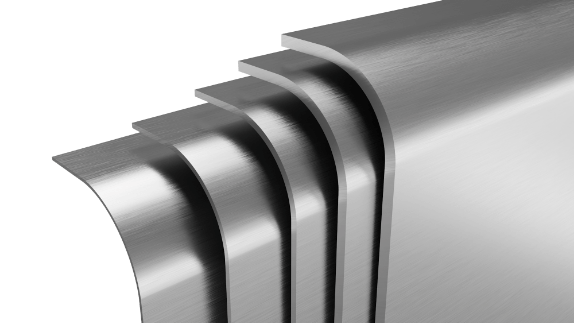
Источник: https://www.mrdirectint.com
Как вы могли знать, большинство моек из нержавеющей стали изготовлены из листов нержавеющей стали.. Листам обычно придают желаемую форму с использованием различных методов, таких как штамповка, сварка, или изгиб. Толщина листа, используемого в процессе изготовления, может варьироваться в зависимости от предполагаемого использования мойки., но обычно это между 18 и 22 измерять.
В целом, более высокий номер калибра означает более тонкую сталь, в то время как меньший номер калибра означает более толстую сталь. Наиболее распространенные калибры для моек из нержавеющей стали: 16, 18, 20, и 22.
В общем, более толстая сталь будет более прочной и менее подвержена вмятинам или царапинам.. Он также обеспечит лучшую звукоизоляцию и будет менее подвержен вибрации.. Однако, более толстая сталь может быть дороже.
По мнению многих, качество также является важным фактором, когда речь идет о мойках из нержавеющей стали. Поставщик листа нержавеющей стализаявления. Мойки более высокого качества будут изготовлены из высококачественной нержавеющей стали., такой как 304 нержавеющая сталь, который более устойчив к коррозии и ржавчине. Более дешевые мойки могут быть изготовлены из нержавеющей стали более низкого качества., который может быть более подвержен повреждениям.
В дополнение к толщина и качество из стали, Другие факторы, которые следует учитывать при покупке мойки из нержавеющей стали, включают: размер и форма раковины, количество чаш, и общий дизайн и стиль.
Раковина из нержавеющей стали против. Фарфоровая Раковина
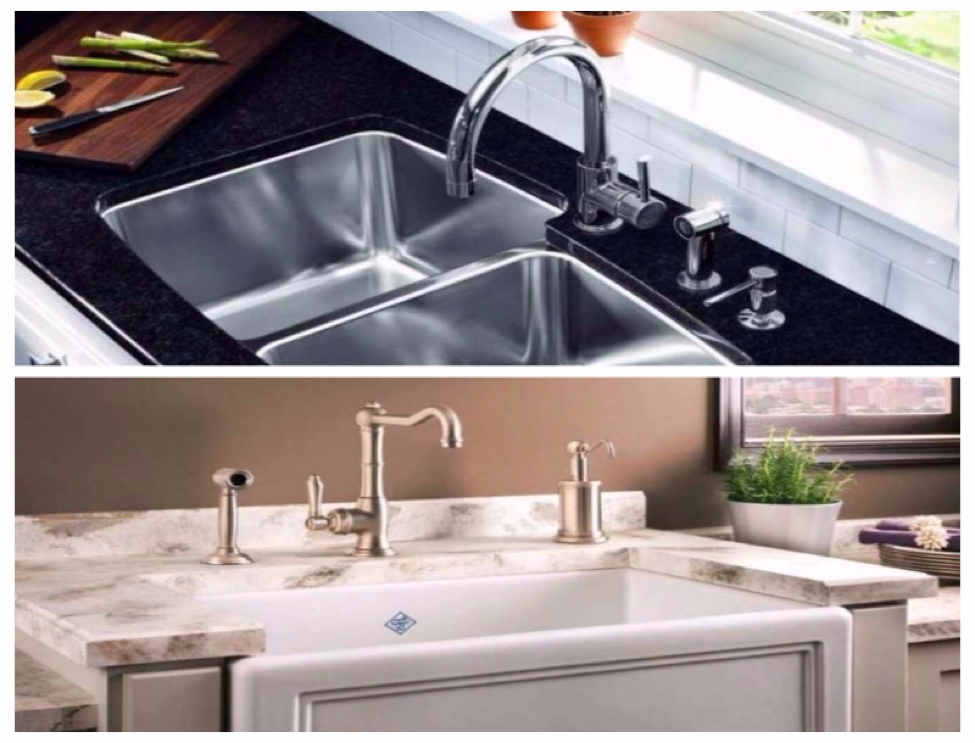
Источник: https://www.baycitiesconstruction.com
Мойки из нержавеющей стали и фарфоровые мойки — два наиболее распространенных типа моек, используемых на кухнях и ванных комнатах.. Вот некоторые факторы, которые следует учитывать при выборе между двумя:
1. Долговечность
Мойки из нержавеющей стали, как правило, более долговечны, чем мойки из фарфора.. Они устойчивы к царапинам, чипсы, и пятна, и с меньшей вероятностью треснут или сломаются. Фарфоровые мойки более хрупкие и могут расколоться или треснуть, если в них уронить тяжелые предметы..
2. Обслуживание
Мойки из нержавеющей стали легко чистить и обслуживать.. Они с меньшей вероятностью испачкаются или обесцветятся., и можно мыть различными чистящими средствами.. Фарфоровые мойки, с другой стороны, требуют большего ухода, чтобы они выглядели наилучшим образом. Они могут быть окрашены определенными веществами., и их будет сложнее чистить.
3. Появление
Фарфоровые мойки часто выбирают из-за их классического стиля., элегантный вид. Они выпускаются в различных цветах и могут добавить нотку изысканности в комнату.. Мойки из нержавеющей стали, с другой стороны, иметь более современный, индустриальный вид. Они доступны в различных вариантах отделки., от матового до полированного, и может дополнить различные стили кухни и ванной комнаты..
4. Расходы
Мойки из нержавеющей стали обычно дешевле фарфоровых.. Они широко доступны и имеют разную цену, подходящую для разных бюджетов.. Фарфоровые мойки могут быть дороже из-за процесса производства и используемых материалов..
В конечном счете, Выбор между мойкой из нержавеющей стали и фарфоровой мойкой зависит от личных предпочтений и конкретных потребностей вашей кухни или ванной комнаты.. Учитывайте свой бюджет, предпочтения стиля, и требования к техническому обслуживанию при принятии решения.
Как избежать царапин и повреждений на раковине SS?
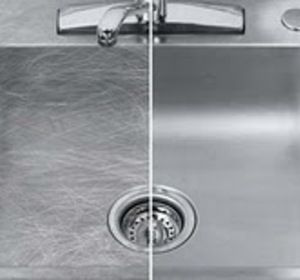
Источник: https://www.pinterest.com.au
Чтобы избежать царапин и повреждений на мойке из нержавеющей стали, вот несколько советов:
1. Регулярно чистите
Регулярная чистка помогает удалить грязь., грязь, и пятна, которые могут вызвать царапины и повреждения поверхности мойки.. Используйте мягкую ткань, губка, или неабразивное чистящее средство для очистки раковины.
2. Избегайте использования абразивных чистящих средств
Избегайте использования жестких абразивных чистящих средств или скребков, таких как стальная вата., металлические щетки, или губки для мытья посуды, так как они могут поцарапать поверхность раковины.. Вместо, используйте неабразивное чистящее средство и мягкую ткань..
3. Будьте осторожны с тяжелыми или острыми предметами.
Не ставьте тяжелые или острые предметы, например кастрюли., кастрюли, ножи, или посуда прямо на поверхности раковины. Вместо, положите их на защитный коврик или подставку.
4. Тщательно промойте
После мытья посуды, обязательно тщательно промойте раковину, чтобы удалить остатки пищи и чистящие средства, которые могут вызвать пятна или повреждения..
5. Избегайте использования отбеливателей или чистящих средств на основе аммиака.
Избегайте использования чистящих средств на основе отбеливателя или аммиака, поскольку они могут вызвать изменение цвета или повреждение поверхности раковины.. Вместо, используйте мягкое чистящее средство или смесь воды и уксуса..
6. Высушите раковину после использования
После чистки или ополаскивания раковины, обязательно тщательно высушите его мягкой тканью, чтобы предотвратить появление пятен от воды или скоплений минералов..
Следуя этим советам, Вы можете помочь сохранить раковину из нержавеющей стали новой и избежать царапин и повреждений..
Как чистить и поддерживать раковину из нержавеющей стали?
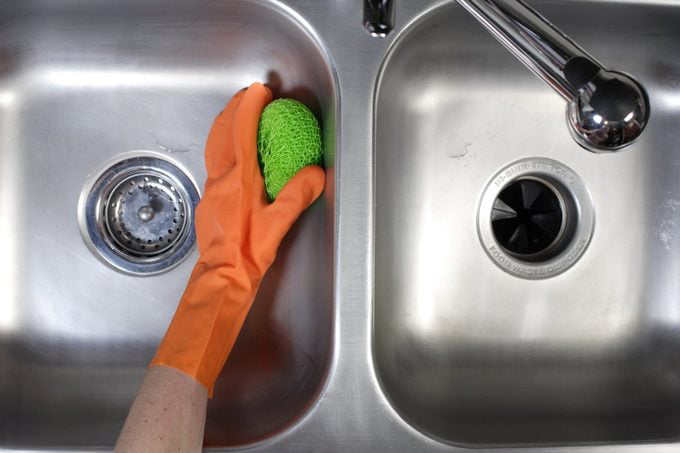
Источник: https://www.familyhandyman.com
Мойки из нержавеющей стали являются популярным выбором из-за их долговечность, гладкий внешний вид, и устойчивость к пятнам и коррозии. Однако, чтобы они выглядели как можно лучше, необходима регулярная чистка и уход. Вот несколько советов о том, как чистить и ухаживать за раковиной из нержавеющей стали.:
1. Регулярно чистите
Очень важно регулярно чистить раковину, чтобы предотвратить накопление грязи и копоти.. Используйте теплую воду и мягкое моющее средство или специализированное средство для чистки нержавеющей стали.. Избегайте использования абразивных чистящих средств, так как они могут поцарапать поверхность раковины.
2. Аккуратно почистите
Для стойких пятен или прилипшей еды, используйте щетку с мягкой щетиной или губку, чтобы аккуратно почистить раковину.. Избегайте использования стальной ваты или других абразивных материалов., так как они могут поцарапать поверхность раковины.
3. Тщательно промойте
После очистки, обязательно тщательно промойте раковину чистой водой, чтобы удалить остатки мыла или чистящего средства..
4. Высушите раковину
Протрите раковину насухо чистой, мягкая ткань для предотвращения образования водяных пятен или минеральных отложений.
5. Отполируйте раковину
Чтобы вернуть блеск вашей раковине, используйте специальный полироль для нержавеющей стали или смесь уксуса и оливкового масла.. Нанесите полироль или смесь на мягкую ткань и круговыми движениями вотрите ее в раковину.. Удалите излишки чистой тряпкой.
6. Используйте коврик для раковины
Для предотвращения царапин и вмятин, используйте коврик для раковины, чтобы защитить дно раковины. Обязательно регулярно чистите коврик, чтобы предотвратить накопление бактерий и плесени..
7. Избегайте агрессивных химикатов
Избегайте использования агрессивных химикатов, например, отбеливатель или аммиак, на вашей раковине из нержавеющей стали, так как они могут повредить поверхность.
Следуя этим советам, Вы можете сохранить блестящую и новую мойку из нержавеющей стали на долгие годы..
Ключевой вывод

Источник: https://stock.adobe.com
Кухонные мойки из нержавеющей стали — популярный и долговечный вариант для домовладельцев.. Они обеспечивают устойчивость к коррозии, пятна, и царапин, а также легко чистить и обслуживать. При выборе Поставщик нержавеющей стали для твоей раковины, учитывать такие факторы, как измерять, заканчивать, и технология снижения шума чтобы гарантировать, что вы получите максимальную отдачу от своих инвестиций. При правильном уходе, Мойка из нержавеющей стали может прослужить десятилетиями., что делает его разумным выбором для любого ремонта или модернизации кухни..























